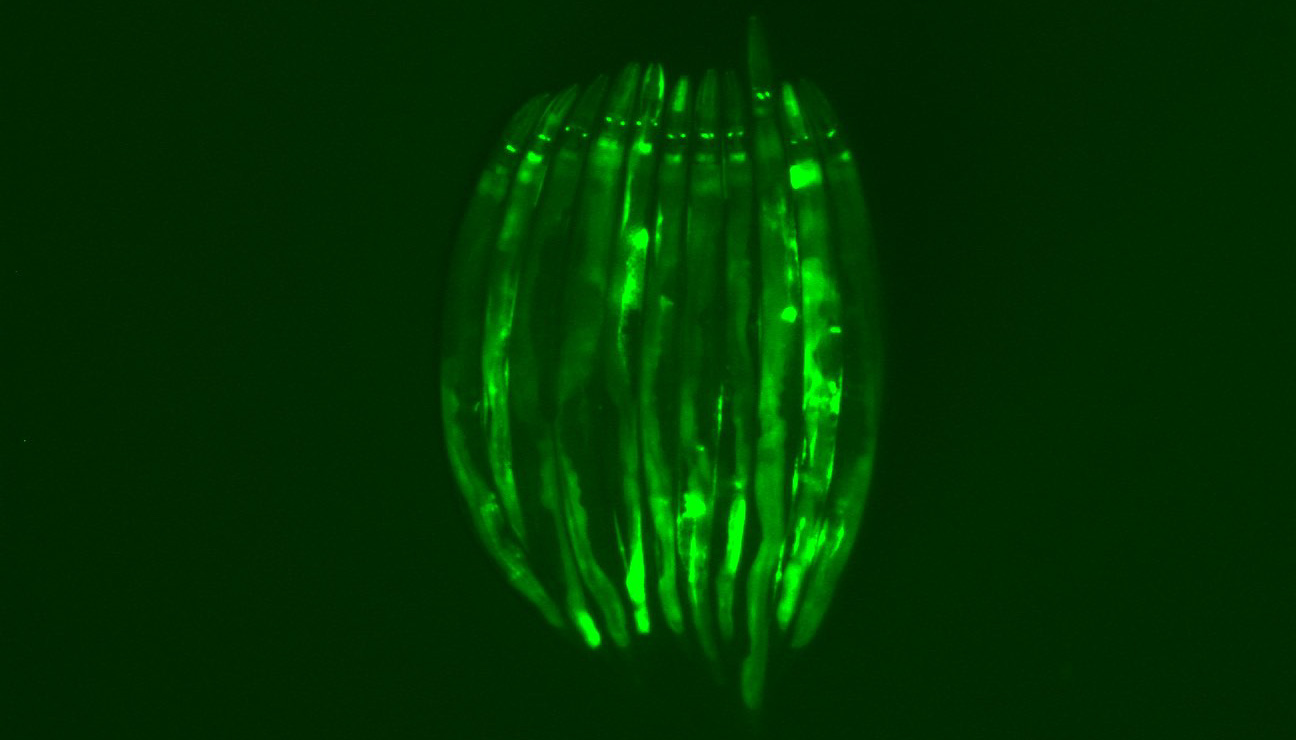Scent of Danger: Do Odours Prime Our Guts for Infection?

A new study from the University of California, Berkeley, has revealed a surprising and potentially groundbreaking finding about how the nematode *C. elegans
responds to the presence of pathogenic bacteria. Instead of simply avoiding the smell of danger, these tiny worms proactively prepare their gut cells for a potential attack.
Like humans, nematodes are susceptible to harmful bacteria that target their digestive systems. In response, *C. elegans
employs a unique defence mechanism: destroying mitochondria, the cell's energy-producing organelles, to protect the vital element of iron from iron-hungry bacteria. Iron is crucial for numerous cellular processes, including the production of ATP, the body's energy currency.
The study's senior author, Professor Andrew Dillin, believes this protective response to microbial odours may be present in other organisms, including mammals. "Could there be a scent emitted by pathogens that we can detect and use to fight off infection?" he asked. "We're exploring this in mice. If we can confirm that humans react to the smell of a pathogen and defend themselves accordingly, imagine the possibilities - a pathogen-protecting perfume, perhaps?"
However, currently, this response has only been observed in *C. elegans*. Despite being one of the most thoroughly studied organisms in laboratories, this discovery is a surprise.
"The novelty is that *C. elegans
is preparing for a pathogen before it even encounters it," said lead author Dr. Julian Dishart. "There's evidence that, alongside the mitochondrial response, a more generalised immune response may be triggered simply by smelling bacterial odours. Given that olfaction plays a conserved role in regulating physiology and metabolism across animals, it's very plausible that smell has a similar impact in mammals as it does in *C. elegans*."
This study, published in the journal *Science Advances*, adds to the understanding of the intricate interplay between the nervous system and the gut, particularly the crucial role of mitochondria.
Professor Dillin is a pioneer in researching how stress within the nervous system triggers protective responses in cells, specifically focusing on the activation of genes that stabilise proteins produced by the endoplasmic reticulum. This activation, known as the unfolded protein response (UPR), acts as a "first aid kit" for mitochondria.
Mitochondria, in addition to being the powerhouses of the cell, play a crucial role in signalling, cell death, and growth. Professor Dillin has shown that UPR network errors can lead to disease and ageing, and that mitochondrial stress in one cell can be communicated to mitochondria in other cells throughout the body.
However, a key piece of the puzzle was missing: what environmental triggers activate the nervous system to initiate this stress communication?
"Our nervous system evolved to pick up on environmental cues and maintain homeostasis for the whole organism," Professor Dillin explained. "Julian discovered that smell neurons are detecting environmental cues and identifying the specific odours from pathogens that activate this response."
Previous research in Professor Dillin's lab demonstrated the importance of smell in mammalian metabolism. When mice were deprived of their sense of smell, they gained less weight despite consuming the same amount of food as normal mice. Professor Dillin and Dr. Dishart hypothesise that the smell of food may trigger a protective response, similar to the pathogen response, to prepare the gut for the damaging effects of ingesting foreign substances and converting food into fuel.
"Evolutionarily, surviving infections was paramount," Professor Dillin stated. "And eating is the riskiest and most demanding thing we do every day, as pathogens are present in our food."
"Eating is incredibly stressful, as the body metabolises food and generates ATP in the mitochondria from the nutrients it incorporates," Dr. Dishart added. "This ATP generation produces a byproduct called reactive oxygen species, which is highly damaging to cells. Cells need to cope with this increased reactive oxygen species. So perhaps smelling food prepares us for this heightened reactive oxygen species load."
Professor Dillin speculates that mitochondria's sensitivity to the smell of pathogenic bacteria could be a remnant from a time when mitochondria were independent bacteria, before being incorporated into other cells as powerhouses to form eukaryotes around 2 billion years ago. Eukaryotes eventually evolved into multicellular organisms with specialised organs - metazoans, such as animals and humans.
"There's ample evidence that bacteria sense their environment in some way, though the exact mechanism isn't always clear. These mitochondria have retained an aspect of this ability after becoming incorporated into metazoans," he said.
In his experiments with *C. elegans*, Dr. Dishart discovered that the smell of pathogens triggers an inhibitory response that sends a signal to the rest of the body. This became evident when he removed olfactory neurons in the worm and observed that all peripheral cells, primarily intestinal cells, displayed the stress response characteristic of threatened mitochondria. This study, along with others, has shown that serotonin is a key neurotransmitter in communicating this information throughout the body.
Professor Dillin and his team are currently tracing the neural pathways connecting smell neurons to peripheral cells and the neurotransmitters involved. They are also investigating a similar response in mice.
"I always hate being ill. It's like, âBody, why didn't you prepare for this better?' It seems foolish to activate response mechanisms only after being infected," Professor Dillin said. "If there are earlier detection mechanisms to increase our chances of survival, that would be a huge evolutionary advantage. And harnessing that biomedically would be extraordinary."
This groundbreaking research has opened a new avenue for understanding how our senses, particularly smell, can play a critical role in our body's innate defence mechanisms. Further exploration of this phenomenon could lead to novel strategies for preventing and treating infections in the future.





